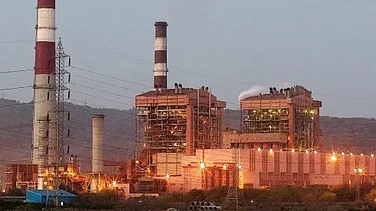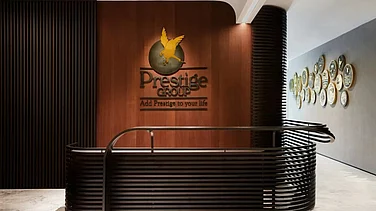B2B marketplace firm Zetwerk is doubling down on its plans to have its own production capabilities to meet the growing demand of consumers. The firm has expanded its capacities in electronics division and is also building presence in international markets like United States.
To meet its capital requirements, the company is also expected to hit the public markets in the next 15 months. In an interview with Outlook Business, Zetwerk's President of Electronics division Josh Foulger talks about how the firm is looking at increase manufacturing base and its expanding supplier network.
What is the strategy behind expanding your own in-house production capabilities?
In the last few years, we’ve been building the Zetwerk Electronics division. Our key goal is to create flexible capacities that can cater to various demands across different product categories. The capacities we’ve developed are flexible and can be adapted to different needs. We are equipped to handle Surface Mount Technology (SMT), through-hole technology, and Final Assembly Testing (FATP), which is essential for high-volume consumer products.
As we look to expand, we are considering integrating various components into our business. The government of India is focusing on components, both in the semiconductor and non-semiconductor sectors. We’re evaluating components like printed circuit boards (PCBs), displays, mechanical parts, and electromechanical components. Our goal is to bring some of these in-house, while other parts will be sourced through our marketplace and partner network.
Customers often ask for turnkey solutions. Our marketplace will help us connect with suppliers and support our customers’ needs, offering them a complete solution. We plan to do more in-house, focusing on areas that align closely with our capabilities, and rely on our partners for the rest. This approach will ensure that we can deliver turnkey solutions when needed while remaining flexible in our operations.
Additionally, design is another area we’re exploring. This is a longer-term plan, but we intend to form partnerships with Original Design Manufacturers (ODMs) to better support our customers. Right now, we are doing some design and integration work in certain divisions, and we’re evaluating where it makes sense to scale this further. However, we will always execute customer designs to the best of our ability.
From Zetwerk's point of view, we act as an aggregator of capacity. However, whenever we don’t find the right capacity to service our customers better, we invest in our own facilities. The decision to venture into electronics, for example, was a big step we took three years ago. If you recall, there was a government order that banned Chinese imports, and at that time, India did not have a mature enough supply chain to meet the demand. So, we decided to set up our own factories, and this is an area where we will continue to actively pursue building our infrastructure.
The government has been asking for focus on quality products. How are you ensuring that your supply chains source quality prodcuts?
I think quality is fundamental in our business—it's hygiene. Customer quality is always our top priority, but it’s a result of having very tight process controls, a strong focus on yields, and systems like poka-yoke (mistake-proofing), which prevent errors. We simply cannot allow mistakes to occur in our operations.
The second step is ensuring that these mistakes do not reach the customers. We have a process called Outgoing Quality Control (OQC), where we ensure that faulty products don’t enter production. We focus on process quality and make sure everything is done right the first time. Whether we are supporting a global or an Indian value chain, we can’t afford to redo work because rework is costly, and we don’t budget for it.
For example, when dealing with high-value components, there’s no room for any yield losses in the A-class parts. I was speaking with a high-end customer this morning, and they emphasized that quality control is tight, and every component needs to be perfect right from the beginning.
When we talk about process control, it also extends to component quality control. The suppliers we work with are self-certified, so we don’t necessarily need to conduct Incoming Quality Control (IQC). However, as we develop suppliers, especially MSMEs in India, we support them by providing our systems. I wouldn’t call them quality inspectors; they are more like quality coaches. These coaches work directly with MSMEs, which is common in the auto industry but not as prevalent in electronics. We help our partners in India develop the right quality standards so that when the products arrive at our factory floor, there are no fitment issues or tolerance problems.
We’re committed to ensuring that products made in India are of the highest quality.
Before we onboard a vendor on our platform, we conduct a thorough background check across thousands of data points, including compliance, environmental factors, social governance, and, of course, quality.
When we work with smaller factories or MSMEs, we deploy a project manager who works with the factory on a daily basis. This person uses our product to send updates to both the customers and us, so we can monitor progress at each step. If a quality issue arises, the entire production process is halted until the fault is resolved.
To sum up, we place a very high focus on quality, and that’s why we’re trusted by some of the top multinational companies across the globe.
In your suppliers network, how big of a role India is playing and what other geographies are contributing?
India remains a large part of our supply network. Other prominent countries include Vietnam, South Korea, and there is still some supply from China—though you can’t ignore China completely. We also have a supply base in Mexico. These are the key regions for our supply chain. In terms of demand, we serve markets primarily in North America, Europe, and Asia, including India.
Given the fact that there is volatility in global markets due to the fear of Trump's tariffs, how are you preparing for this?
Over the past 10-15 years, there has been a geographic concentration in supply chains, driven by companies’ decisions. I remember a time back in the late ‘90s when there was no such concentration—multiple geographies were involved. We always looked at demand and supply networks together. We used to call it the DSN (Demand Supply Network). We would look at big demand centers and figure out how to serve them from there.
The reason I joined Zetwerk is that after 20 years, I finally see a company thinking in this mode. For markets like the US and Europe, we’re really focused on serving the demand in a way that doesn’t require constant updates on how the supply chain should be structured. We already started this journey 5 years ago, establishing a footprint in North America and Europe to better serve our customers there.
That mindset sets us up to better navigate geopolitical changes, tariffs, and other global challenges.
Our primary goal is to respond to customer needs. Right now, around 10-12% of our revenue comes from the infrastructure and factories we own. This might fluctuate by 2-3 percentage points, but it generally stays within that range. That said, whenever we see a gap in the supply chain, like we did in electronics, we’ll be open to stepping in and filling that gap by creating our own supply.
There are also talks about greening supply chains. Is sustainability also a focus area for Zetwerk?
Being green cannot be an afterthought; it should already be in the design. Whether we choose supply partners or have our own production capacities, we ensure that environmental impacts are considered. For instance, in the electronics industry, lead-free RoHS (Restriction of Hazardous Substances) has been a standard for a long time. We service industries like automotive, computer hardware, and communications, all of which are very strict about sustainability.
There's an external push from our customers to comply with green standards, so this is built into our processes. Whenever we build or acquire a new footprint, we ensure we use renewable energy sources, such as wind or solar, and meet water neutrality requirements. We also work closely with local government bodies to ensure compliance with environmental standards. This is standard practice in our industry, but we’re also focused on doing more in areas like workforce management. We’ve already achieved a diverse workforce in our factories, with women making up 40-70% of the staff, which is an initiative I am personally passionate about.
Our sustainability requirements for suppliers are quite stringent. They include environmental factors, such as how they manage effluent and emissions, especially in industries like surface treatment for metals. We also ask our suppliers about their energy sources—whether they use renewable power like wind or solar. In Europe, this is more stringent, and in India, it’s evolving, but we're catching up. Additionally, we require certain product-specific certifications and ensure that suppliers comply with workforce treatment standards, such as the Responsible Business Alliance (RBA) certification. We hold our suppliers to these standards to ensure they align with our values and the expectations of the industries we serve.
We focus on optimizing existing factory capacities instead of building new ones. For instance, rather than building 10 new factories to service 10 additional customers, we are utilizing the same factories to serve 20 customers. This model helps us cut down on environmental impact. Most of our revenue (around 85-90%) comes from our marketplace model, where we use existing suppliers to deliver products, rather than setting up new factories ourselves. We haven’t formally studied the environmental impact, but this optimization approach significantly reduces the need for additional manufacturing infrastructure.
Can you elaborate on your investment plans for the upcoming years and what segmens will you focus on?
We’ve earmarked about ₹1,000 crores for business expansion, which includes investments in electronics. This is linked to the Production-Linked Incentive (PLI) schemes we've applied for in our business. We are in the investment phase, with some of these plans tied to PLI initiatives, and we’ll continue to evaluate and deploy investments based on our FY26 plans. We are focused on forward-looking technologies and supporting customer needs, so we're investing ahead of the curve while being careful about returns on capital deployed.
We recently received the PLI for white goods, and it’s a significant opportunity for us. It enables us to expand in the consumer durable goods market, which is currently a low-penetration segment in system design and ESDM (Electronics System Design and Manufacturing). We are excited about this and are working quickly to scale up and serve new customers. This PLI is part of the ₹1,000 crores earmarked for our investment plans, and we’re integrating it into our broader expansion strategy.
Of Zetwerk's overall business, how big of a role can electronics division play in driving growth?
The revenue from the electronics division is significant, but it depends on the business model. In the electronics industry, we use different models, including consignment business (job work), buy-sell models, and turn-key business. The revenue from the buy-sell and turnkey models is higher because we recognize the revenue in our system. However, we also do a lot of job work, which doesn’t show up as high revenue but offers incredible returns on capital. We are growing in the industrial, automotive, and computing sectors, and our revenue in electronics could increase as we continue to develop these areas.
There were reports about your IPO plans. When is the company looking to hit the public markets?
Yes, we are on track for a public issue, with a timeline set for about 15 months from now. We’ve had discussions with bankers, and some conversations are still ongoing. We are focused on executing the growth plans and ensuring everything aligns for a successful market entry.




























